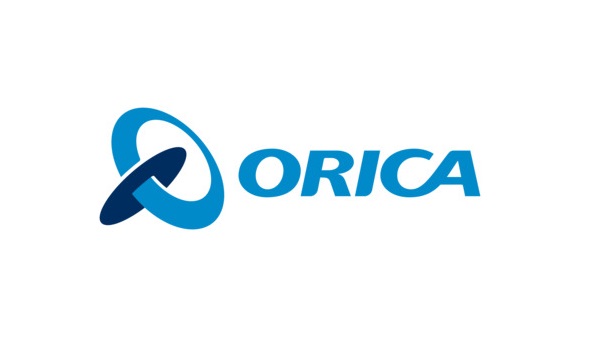
The Trans-National Gateway Connecting the Baltics and Europe
Rail Baltica is a much needed European gate railway and an economic corridor of high importance to the European Union. When completed in 2026, it will pass through Estonia, Latvia and Lithuania, connecting Finland in the north with the rest of Europe in a way that it has never been possible before: for the first time, all the largest Baltic cities, seaports and airports will be connected through a continuous rail link.
This is what the European Union calls ‘a European value-added project’ meaning that it ticks boxes in areas like removing a transportation bottleneck, bridges a missing link, utilizes innovation and digitalization, promotes the EU single market and equal competition, reduces CO2 emissions and above all, increases the safety of EU citizens. By 2030, it is estimated that it will be carrying 5 million passengers and 16 million tonnes of cargo daily.
The impact that project is set to have on Europe is massive. We took the opportunity to look over some of the aspects of a project which is set to become a catalyst for building a new economic corridor in northeastern Europe. We look at the difference the arrival of Rail Baltica will make to the Baltic states, Europe as a whole and of course, the socioeconomic impact which will be felt during and after its construction.
Financing and Construction
As a project which stands to benefit all of Europe, Rail Baltica was naturally able to draw from the European Union’s CEF funds. The estimated total cost is EUR 5.8 billion and of this, the EU is expected to contribute around 85% (or EUR 4.6 billion). The remaining EUR 1.2 billion will be provided by the Baltic countries’ national budgets. Construction began in 2019 and EUR 800 million has already been made available to ensure that the project runs according to its schedule.
To formalize the arrangement, a joint venture (“RB Rail AS”) exists between the three Baltic States, which each holds a third of the shares in the venture. This is not just a commercial partnership however: All three countries stand to become more integrated in a number of ways when the project is delivered - through connecting regions, fostering business relations, technological transfer and tourism development.
In terms of the technical aspects of the project, 870 kilometres of new fast, conventional double-track electrified and ERTMS-equipped railway line will run through the three countries (of which 213km in Estonia, 265km in Latvia and 392km in Lithuania). The trains will be capable of speeds of up to 249 kilometres per hour for passenger trains and 120 kilometres per hour for freight trains. The axle load is 25 tonnes with a maximum freight train length of 1,050 metres.
As of Q1 2020, all of the formalities for the project are in place: feasibility studies have been conducted, environmental impact studies completed, contracts have been signed with the partners and suppliers (see below), the land required has all been purchased. Construction has now begun. At its peak, this phase will involve 3,000 full-time jobs as well as supporting a further 24,000 indirect and induced jobs as a result of the work being carried out.
Tangible Socio Economic Impact
At a time when some people are questioning the ‘European Project’, Rail Baltica serves as a powerful response to the power of integration. It is truly part of something much bigger: It bridges a gap, reconnecting the Baltic countries by railway with the rest of Europe.
This means two things: First, that passengers and cargo can move from the southeastern most tip of Europe in Portugal, through the continent before passing through the Rail Baltica network and moving directly on to Helsinki. Secondly, it means that the European rail network is now all connected with the Eurasian rail network, meaning cargo can travel by rail as far as China or even Vladivostok, the largest port on Russia’s eastern seaboard.
When completed, the time saved by Rail Baltica on journeys will amount to an estimated EUR 5.3 billion in productivity gains or 5.3 million passenger hours gained each year. It will also become a catalyst for significant economic gains in the Baltic States located on Europe’s fringe. This should translate to spin-off investments, new business formations and enhanced labour mobility.
Partners and Suppliers
As an EU-funded project, public tenders were opened to companies across the trading bloc and not just those within the Baltic States. The result is a rich tapestry of firms from right across the continent which are involved at the construction phase. Looking through their names and origins, it’s not difficult to see that the project is connecting Europe before it has even been delivered.
Inevitably, given the nature of the project, the list of partners is dominated by engineering and engineering consulting firms. They include DB Engineering & Consulting from Germany, Systra and Egis from France, 3TI Progetti Italia from Italy, and ETC Consultants GMBH from Germany. AS YIT Infra Eesti, an Estonian construction firm, is responsible for much of the construction on the line, while IDOM, the Spanish architecture and engineering house, rounds out the list.
Bentley Systems International Limited, a British firm, was contracted in the fourth quarter of 2019 to “deploy, implement and maintain Rail Baltica Common Data Environment for building [an] information management system (BIM)." Finally, Marsh SIA, a financial institution, has been tasked with managing the project’s considerable budgetary requirements.
Rail Baltica shows the European Project is on Track
Rail Baltica shows the best of the ‘European Project’: that small countries in a community have much to contribute to big countries and vice versa; it shows that by making your neighbour stronger, you also become stronger (i.e. with enhanced rail networks in the Baltic states, the EU now has a fully integrated rail network which has access to the Eurasia network); above all, it shows that integration in Europe is far more than an intangible idea.
Rail Baltica will bring countless benefits to the Baltic States and Europe as a whole: safer, cleaner transportation, new opportunities for multimodal freight logistics development, sustainable education and employment opportunities and an environmentally sustainable transport infrastructure. The Baltic States were officially welcomed into the European Union in May 2004 but one feels that, when Rail Baltica arrives in 2026, they will truly be a part of the continent.
DOWNLOAD
 RailBaltica-May2020_0.pdf
RailBaltica-May2020_0.pdf















